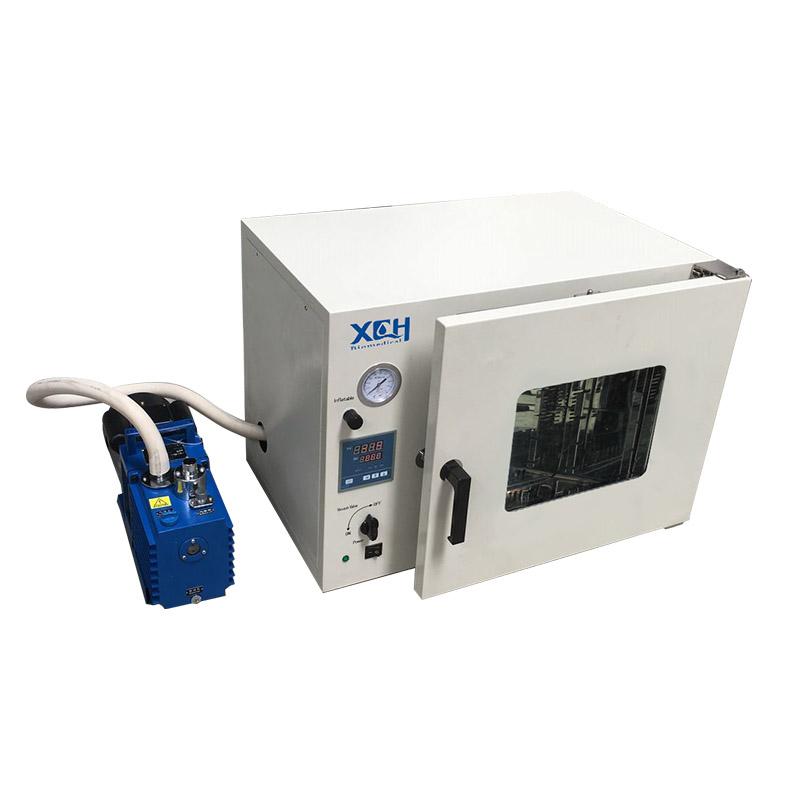One of the essential pieces of equipment in any materials testing laboratory is an oven, also known as a oven. They remove surface moisture while heating the material. Drying chambers are used in a variety of different applications such as sterilization, annealing, aging tests and incubation.
Choosing a laboratory drying oven is an important purchasing decision. With a large number of ovens available with different configurations and characteristics, it is important to understand how to evaluate an oven based on various specifications and capabilities.
How to choose a
drying oven for laboratory
Read on to learn five factors to consider before purchasing a lab drying cabinet.
1. Heating method
On the surface, each oven works basically the same way—heating and removing moisture from samples inside. Ovens, however, accomplish this differently.
Ovens utilize three heating methods: infrared (IR) heating, convection heating, or a combination of the two.
Ovens that use convection heating are equipped with fans that circulate hot air around the chamber to evenly heat the sample. Meanwhile, infrared ovens allow you to target specific areas for heating. They operate by line-of-sight heating, which means they transfer heat to the part of the object that is directly within the line-of-sight of the heater.
Ovens with hybrid infrared convection heating systems tend to be favorites of professionals because they offer greater drying flexibility.
2. Oven structure
How an oven is constructed determines its performance. When you're examining an oven you might want to buy, there are some important structural features to look out for.
First, look at the materials used. Depending on your needs, you can choose an oven made of durable, non-corrosive and easy-to-clean stainless steel.
Then, look at its insulation. A well-insulated oven prevents heat loss that could damage samples. If you are performing high temperature processes, choose a double wall oven to ensure it can withstand extreme heat.
Also, to avoid any heat loss, choose doors with heavy-duty doors and safety hinges for a tight seal that keeps air out.
Another factor to watch carefully are the controls. The oven with digital PID (Proportional, Integral, Derivative) control is programmable for more accurate testing and includes many features such as calibration routines and data logging.
You may also want an oven with overheat protection to help keep you safe in the lab. They automatically shut off if the temperature exceeds a certain point, preventing fires and accidents.
3. Chamber size
How large or small is your sample size? This will help you determine the size of the oven to buy. Choosing a chamber that is too small will be a hindrance to your productivity. At the same time, a device that is too large will make your lab feel cramped and cost more due to its higher heat output.
So before looking for an oven to buy, measure the available space in your lab. Take note of the width and height to get a better idea of which ovens to consider and which might not fit.
4. Heating uniformity
No matter how many are placed, the samples in the oven must receive the same heat treatment. Therefore, the heat should be consistent throughout the oven. This is known as heating or temperature uniformity.
Several factors can affect the uniformity of heating in an oven, primarily the way the oven is constructed. If the insulation is inconsistent or there are small gaps in the oven door, cold air can seep in and disrupt the temperature in the room. These cold spots cause some samples to get hotter than others.
For example, if you place samples that are subjected to varying degrees of heat, this can result in poor product quality or inconsistent and unreliable results.
That's why it's in your best interest to look for an oven that distributes heat evenly. But how do you know if it exists?
Usually, reputable manufacturers will provide information about the heating uniformity of their ovens on their official product pages online. For example, on the official page for Across International's 250C 3 Shelf Vacuum Oven, you'll find it clearly states that its temperature uniformity is ±7% of set point.
5. Recovery time
Whenever you open the oven door to add or remove samples some heat is released. When this happens, the oven increases energy output to compensate for heat loss. The time it takes to return to the proper temperature is the recovery time of the oven.
Ovens with shorter recovery times allow for greater accuracy and thermal uniformity, but at the cost of adding more load to the system. Depending on your specific use case, this may be a negligible or non-negotiable feature. If your samples have very complex heating requirements, it is best to purchase an oven with a short recovery time.
Or, if your oven has a relatively long recovery time, it can prevent excessive heat loss. Being more careful when preparing samples can help limit how often the oven door is opened. Adding the proper amount of sample to the oven allows for better and even heat transfer.

Invest in a high-quality
vacuum oven with pump
Since laboratory drying ovens play an important role in laboratory testing, taking the time to choose which oven to purchase will save you money and worry.
It starts with understanding what exactly you need your oven to do. There is no perfect oven, only one that suits your needs. This will help you determine which heating method is right for you, what materials, sizes and widths you need in the oven's construction, and how it manages its internal energy system.
Check out XCH Biomedical for high quality, durable and reliable
laboratory vacuum oven. If you are still not sure which oven to buy for your laboratory, you can easily consult XCH Biomedical.
